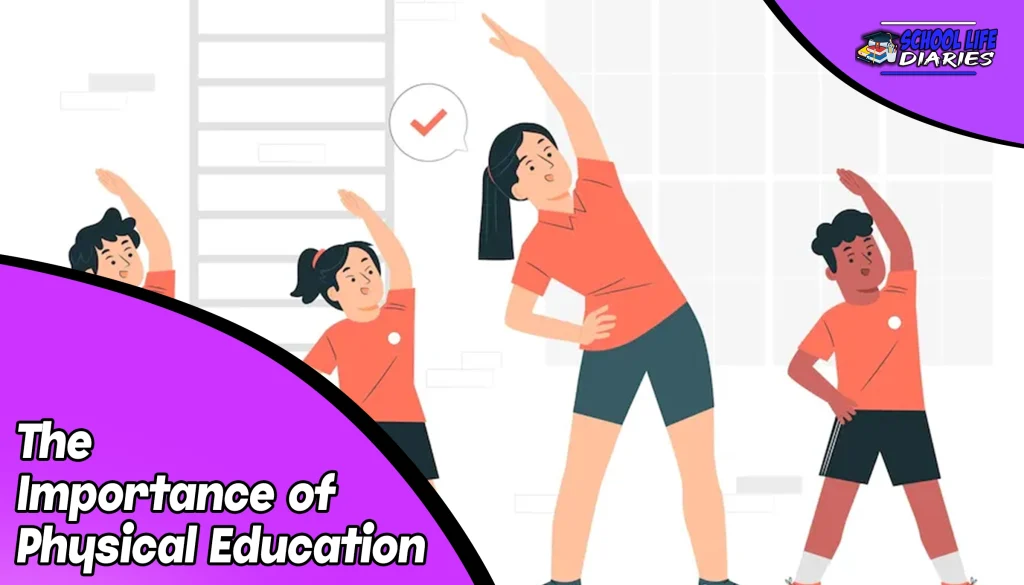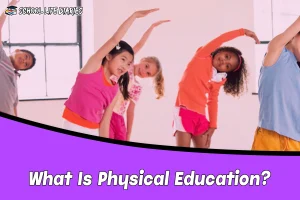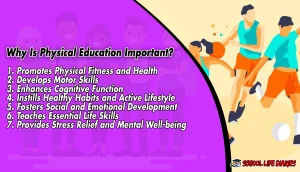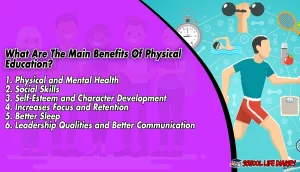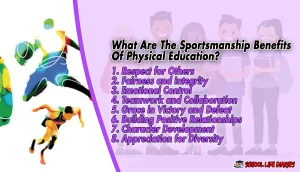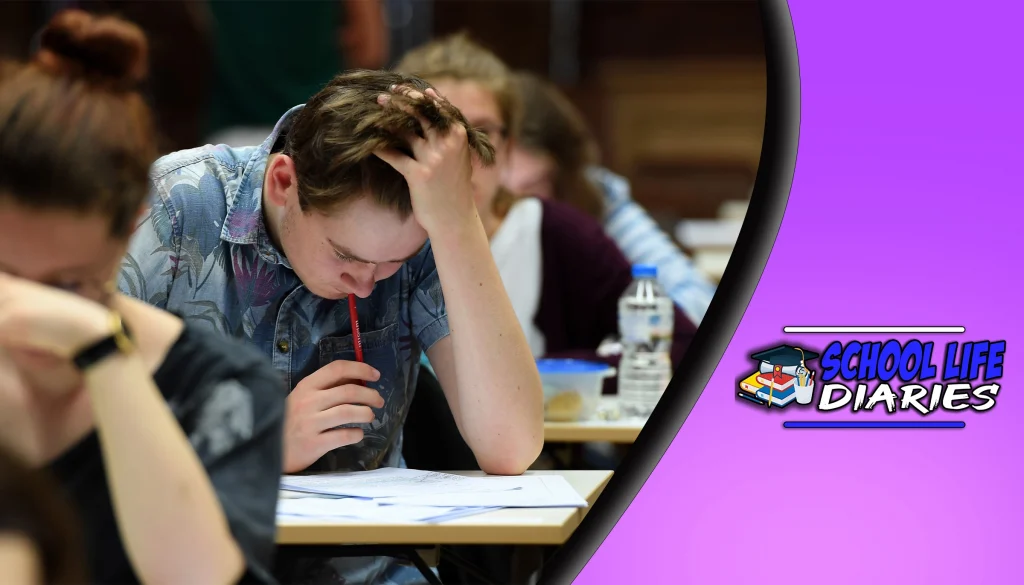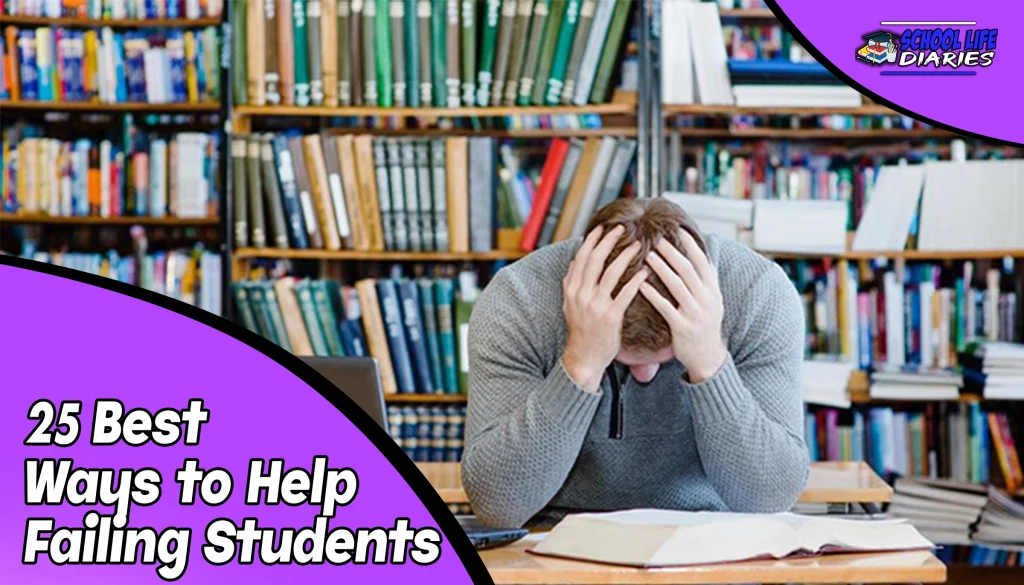The Importance of Physical education goes beyond mere exercise; it encompasses a holistic approach to nurturing our physical, mental, and social well-being. In this beginner-friendly guide, we will explore the benefits of physical education, its impact on our overall health, and how it contributes to personal growth and development.
So, let’s dive in and discover why physical education is an essential component of a balanced and fulfilling lifestyle. Get ready to embark on a journey of knowledge and exploration, as we unravel the secrets of physical education and its transformative power.
What Is Physical Education?
Why Is Physical Education Important?
1. Promotes Physical Fitness and Health:
Physical education plays a critical role in promoting physical fitness and overall health. Through regular physical activity, students can improve their cardiovascular endurance, muscular strength, flexibility, and coordination.2. Develops Motor Skills:
Physical education provides opportunities for students to develop and refine their motor skills. Whether it’s running, jumping, throwing, or balancing, physical education activities help enhance coordination, agility, and fine motor skills.3. Enhances Cognitive Function:
Engaging in physical education has a positive impact on cognitive function and academic performance. Research shows that physical activity stimulates the brain, and improves concentration, attention span, and memory retention.4. Instills Healthy Habits and Active Lifestyle:
Physical education helps instill healthy habits and promotes an active lifestyle from an early age. By introducing children to a variety of physical activities and sports, physical education encourages them to find enjoyable ways to stay active. These experiences lay the foundation for a lifelong commitment to physical fitness and overall well-being.5. Fosters Social and Emotional Development:
Physical education provides opportunities for students to engage in cooperative and competitive activities, promoting social interaction, teamwork, and sportsmanship. Through team sports and group exercises, students learn to communicate effectively, collaborate, and respect others.6. Teaches Essential Life Skills:
Physical education teaches essential life skills that go beyond physical fitness. Students learn the importance of goal setting, discipline, time management, and perseverance.7. Provides Stress Relief and Mental Well-being:
Engaging in physical activity through physical education acts as a natural stress reliever and promotes mental well-being.Is Physical Education Easy?
No, physical education is not necessarily easy. While the level of difficulty can vary depending on factors such as the activities involved, individual fitness levels, and personal preferences, physical education often requires effort and participation.
Engaging in physical activities and sports can challenge individuals both physically and mentally. It may involve pushing one’s limits, developing new skills, and persevering through physical exertion. The level of difficulty can be adjusted based on individual needs and progress.
Physical education aims to provide a supportive environment where students can improve their physical fitness, develop skills, and enjoy the benefits of an active lifestyle. With guidance from teachers and a positive mindset, students can overcome challenges and find enjoyment in the process of physical education.
What Are The Functions And Goals Of Physical Education?
1. Promoting Physical Fitness:
Physical education aims to improve students’ physical fitness levels by engaging them in regular physical activity. It focuses on developing and enhancing components of fitness such as cardiovascular endurance, muscular strength, flexibility, and body composition. By promoting physical fitness, physical education contributes to overall health and well-being.
2. Developing Motor Skills:
One of the key functions of physical education is to develop and refine students’ motor skills. It provides opportunities for them to practice and improve fundamental movement skills such as running, jumping, throwing, catching, and balancing.
Developing motor skills enhances coordination, agility, and control, which are essential for participation in various physical activities and sports.
3. Fostering Social and Emotional Development:
Physical education plays a crucial role in fostering social and emotional development among students.
Through team sports, group exercises, and cooperative activities, students learn to work together, communicate effectively, and develop sportsmanship.
Physical education also helps build self-confidence, self-esteem, resilience, and positive relationships with peers.
4. Promoting Health and Wellness Education:
In addition to physical activity, physical education educates students about health and wellness. It provides knowledge and understanding of topics such as nutrition, hygiene, injury prevention, stress management, and the importance of a balanced lifestyle.
By promoting health education, physical education equips students with the necessary information and skills to make informed decisions about their well-being.
5. Enhancing Cognitive Function:
Physical education contributes to the enhancement of cognitive function. Engaging in physical activity stimulates the brain, leading to improved focus, concentration, memory retention, and problem-solving skills.
By integrating physical activity with academic learning, physical education supports students’ overall cognitive development and academic achievement.
6. Instilling Lifelong Fitness Habits:
One of the primary goals of physical education is to instill lifelong fitness habits and promote an active lifestyle. By exposing students to a variety of physical activities and sports, physical education helps them discover enjoyable ways to stay active.
It aims to foster a love for movement and physical activity that extends beyond the school years, leading to lifelong fitness and improved quality of life.
7. Encouraging Personal Growth and Well-being:
Physical education strives to promote personal growth and well-being. It provides opportunities for students to set goals, challenge themselves, and experience personal achievement.
Physical education also contributes to stress relief, mental well-being, and improved self-esteem. It encourages students to embrace an active and healthy lifestyle for their overall well-being.
What Are The Main Benefits Of Physical Education?
1. Physical and Mental Health:
Physical education promotes physical fitness and overall health by engaging students in regular physical activity. It helps improve cardiovascular endurance, muscular strength, flexibility, and coordination.
Physical activity stimulates the brain, leading to improved cognitive function, focus, and memory retention. By prioritizing physical and mental health, physical education contributes to a healthier and more balanced lifestyle.
2. Social Skills:
Physical education provides opportunities for students to engage in team sports, cooperative activities, and group exercises. These activities foster social interaction, teamwork, and sportsmanship.
Students learn to communicate effectively, collaborate, and develop positive relationships with their peers. Engaging in physical education promotes the development of valuable social skills that are essential for successful interactions in various settings.
3. Self-Esteem and Character Development:
Through physical education, students can build self-esteem and develop character traits such as discipline, resilience, and perseverance.
Setting and achieving personal goals, overcoming challenges, and experiencing personal growth contribute to increased self-confidence and a positive self-image.
Physical education helps students develop qualities that are beneficial in both physical and personal endeavors.
4. Increases Focus and Retention:
Regular physical activity has been shown to enhance cognitive function, including increased focus and improved memory retention. By integrating physical activity into the learning process, physical education supports academic achievement.
Engaging in physical education can help students stay alert, improve concentration, and enhance their ability to retain information.
5. Better Sleep:
Physical education and regular physical activity contribute to better sleep patterns. Exercise helps regulate sleep cycles, improves sleep quality, and promotes relaxation.
By incorporating physical education into their routine, students may experience improved sleep patterns, which in turn positively impacts their overall well-being and academic performance.
6. Leadership Qualities and Better Communication:
Physical education offers opportunities for students to develop leadership qualities. Through team sports and group activities, students learn to take on leadership roles, make decisions, and guide their peers.
Physical education promotes effective communication skills as students collaborate, cooperate, and engage in sportsmanship. These skills are transferable to various aspects of life, including academics, career, and personal relationships.
What Are The Sportsmanship Benefits Of Physical Education?
1. Respect for Others:
The Importance of Physical education instills the value of respect for others. Through engaging in team sports and group activities, students learn to respect their opponents, teammates, coaches, and officials.
They understand the importance of fair play, treating others with dignity, and valuing the efforts and abilities of all participants.
2. Fairness and Integrity:
Sportsmanship in the importance of physical education promotes fairness and integrity. Students learn to adhere to the rules of the game, follow ethical standards, and demonstrate honesty in their actions.
They understand that winning or losing is not the sole focus, but rather the manner in which the game is played.
3. Emotional Control:
Sportsmanship teaches students to control their emotions in competitive situations. They learn to manage frustration, disappointment, and anger while maintaining composure and respect. This emotional control helps create a positive and respectful environment for all participants.
4. Teamwork and Collaboration:
The importance of Physical education encourages teamwork and collaboration among students. Through team sports and group activities, students learn to work together towards a common goal.
They develop effective communication skills, cooperation, and the ability to support and rely on their teammates. Sportsmanship fosters a sense of unity and collective effort.
5. Grace in Victory and Defeat:
Sportsmanship teaches students to handle both victory and defeat with grace and dignity. They learn to appreciate and acknowledge the achievements of others, whether they win or lose. Students understand that true success is not solely determined by the outcome of the game, but by the way they conduct themselves during and after the competition.
6. Building Positive Relationships:
Sportsmanship in physical education helps build positive relationships among students. By practicing respect, fairness, and integrity, students develop camaraderie, trust, and mutual respect with their peers. These positive relationships extend beyond the sports field, creating a supportive and inclusive community.
7. Character Development:
Sportsmanship in physical education contributes to character development. Students learn important life lessons such as resilience, perseverance, and humility.
They develop a strong work ethic, sportsmanlike behavior, and a sense of responsibility. These qualities are transferable to other areas of life, including academics, career, and personal relationships.
8. Appreciation for Diversity:
Sportsmanship promotes an appreciation for diversity and inclusivity. Students learn to embrace and respect individual differences, including abilities, backgrounds, and cultures.
The importance of Physical education provides opportunities for students to interact with diverse peers, fostering understanding, acceptance, and empathy.
Related Article: Is Prom Only For Seniors? Debunking The Myth
Final Thoughts: Importance of Physical Education
Physical education plays a crucial role in promoting physical fitness, fostering social and emotional development, and instilling valuable life skills in students. By engaging in regular physical activity, students can improve their overall health and well-being, develop motor skills, and enhance cognitive function.
Physical education also promotes teamwork, sportsmanship, and character development, while providing opportunities for personal growth and leadership. It encourages an active and healthy lifestyle that extends beyond the school years.

